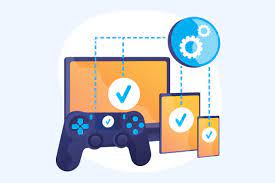Today, technology has become accessible to almost everyone. This accessibility has led to both kinds of implications, positive and negative. The likes of AI in healthcare making positive impact. Deepfake is one such technological advancement that is making heads turn.
What are Deepfakes?
Deepfakes are synthetic media created using deep learning and artificial intelligence (AI). They replace a person’s face or audio in an image or video to make it seem like they said or did something they didn’t do in reality.
Although fake content creation is not new, deepfake leverages the power of data science and creates images and videos that are easily deceptive.
Deepfakes are increasingly being used to morph the images of celebrities over inappropriate content and produce rumors and misleading information about politicians. For example, in 2018, a fake video featuring Barack Obama was created, and it showed him speaking words that he had never actually uttered.
These negative uses of deepfakes create a nuisance by spreading false information, especially on social media.
Algorithms that Deepfakes use
Deepfakes are created using artificial intelligence and machine learning algorithms. These algorithms can generate content based on the given input. For any activity to take place using AI and ML, the system must first be trained. The system is fed large amounts of data, enabling it to create new data.
The creation of deepfakes depends mainly on two algorithms:
1. Autoencoders
An autoencoder is a technology that is based on dimensionality reduction. It performs two tasks.
- First, it encodes the given input (image/video in this case) into a small set of numerical values until it reaches a ‘bottleneck’ layer.
- Next, the decoder decodes the data in the bottleneck layer to recreate the input image.
An autoencoder is trained by feeding large data sets so that the input and output are as similar as possible.
Creating deepfakes requires two autoencoders- one for the face and one for the target.
After training, the target autoencoder encodes the facial features into the bottleneck layer. This data is then fed into the decoder of the actor autoencoder. The result? The face of the actor with the facial expression of the target.
2. Generative Adversarial Network (GAN)
Generative Adversarial Networks are a set of neural networks that train themselves to recognize patterns. It helps them identify the actual characteristics based on which they generate fake images.
A GAN consists of two neural networks- a generator and a discriminator.
The working of a GAN is as follows:
- The generator recognizes the patterns in the input and trains itself to recreate them. Based on this training, it generates a fake image.
- This fake image is sent to the discriminator along with the actual data.
- The discriminator’s job is to verify the authenticity of the image. It identifies whether the generated image is real or fake.
- The system is trained until the discriminator can no longer distinguish between the actual image and the fake one.
- The harder it is to distinguish between the input and output, the better the system is trained.
GANs are complex and more challenging to train than autoencoders. They also require more resources to train and function. Thus, they are used mainly for images rather than videos.
The images generated by GANs are realistic, and it is nearly impossible to tell whether it is real or fake.
How to Spot Deepfakes?
The difficulty increases as technology advances. 2018 saw the discovery by US researchers that deepfake faces don’t blink regularly. It’s not surprising that the algorithms never really learn about blinking because the majority of photographs feature people with their eyes open.
It initially appeared to be the perfect solution to the detection issue. But as soon as the research was publicised, deepfakes started to appear. The game is designed in such a way that any weaknesses are immediately rectified.
Deepfakes of lower quality are simpler to detect. The skin tone may be uneven, or the lip synching may be poor. Transposed faces may occasionally have flickering around their edges.
Additionally, deepfakes find it particularly challenging to reproduce small details like hair well, especially when individual strands are visible on the fringe. Poorly produced jewellery, teeth, and unusual lighting effects like iris reflections and irregular illumination can all be telltale signs.
Wrapping up
Deep learning methods and AI/ML have improved significantly over the years. As a result, technologies like deepfake have gained popularity. The easy availability of images and videos and accessibility of data science has made deepfakes a common phenomenon.
Where AI is used to improve e-scooter business, this technology is mainly used for unethical purposes today, it has its own set of advantages. Its current usage may make one think of it as a destructive technology, but it can be a game-changer if used correctly.
It can prove beneficial to industries like entertainment, media, and education by making content engaging and interesting. Like every technology, deepfake has its pros and cons. What matters is how we utilize this technology to serve a better purpose.





